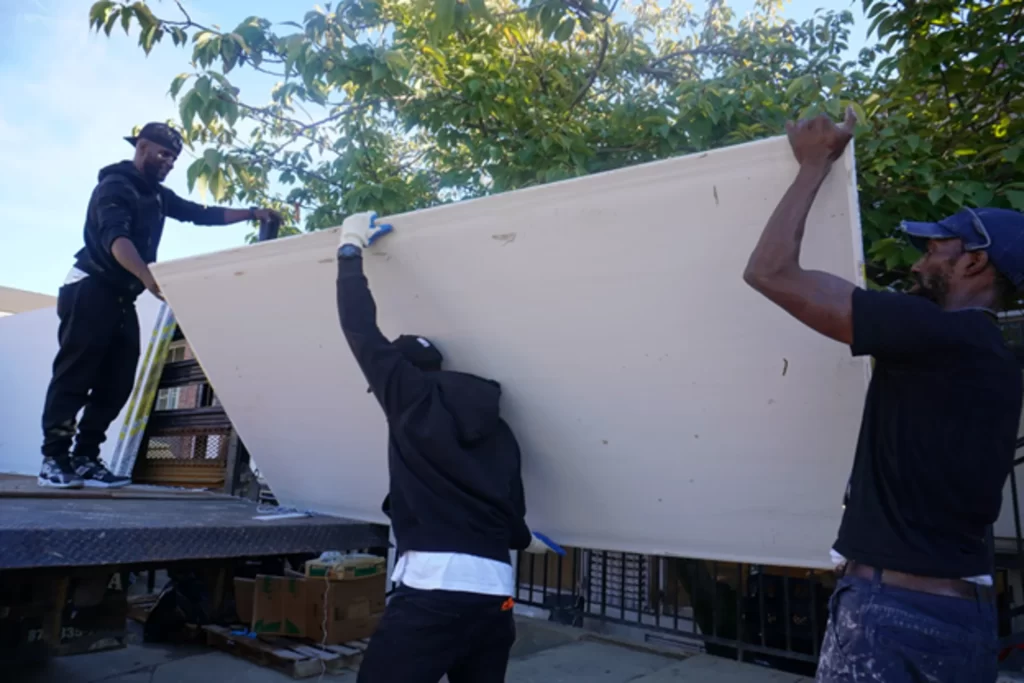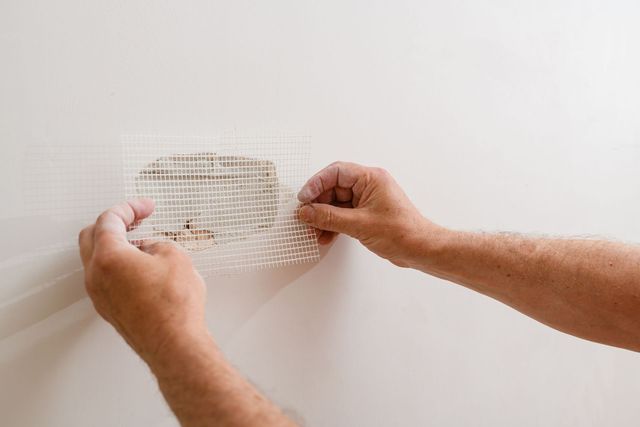Discover the most effective Practices for Effective Drywall Fixing and Setup
The art of drywall fixing and installment calls for a mix of skill and precision. Grasping the vital devices is important for attaining a seamless finish. Recognizing the detailed procedure can make a considerable distinction in the result. Correct methods for taping and mudding are also crucial. What remains is the knowledge of upkeep that ensures durability. These aspects with each other produce a polished outcome worth exploring even more.

Essential Devices for Drywall Repair Work and Installation
When undertaking drywall repair service and setup, having the right devices can substantially improve the performance and quality of the work. An utility blade is necessary for cutting drywall sheets specifically, while a drywall saw can aid in making much more complex cuts. Taping blades, offered in various sizes, are crucial for using joint substance efficiently and evenly. A drywall sander, ideally with a dust collection function, aids accomplish a polished coating, minimizing the demand for considerable clean-up.
Furthermore, a determining tape warranties exact dimensions, and a degree makes sure that setups are straight and plumb. Safety equipment, consisting of dust masks and goggles, should not be forgotten to shield versus debris and dirt. A stud finder aids in locating framing members, ensuring secure installment. By equipping oneself with these important devices, the repair service and installation process ends up being a lot more manageable and results in a professional-quality outcome.

Step-by-Step Overview to Patching Holes
Covering holes in drywall requires a systematic method to ensure a smooth repair service. First, the area around the opening must be cleaned and any loosened debris removed. For tiny holes, a putty blade can be made use of to apply a light-weight spackle, pressing it right into the hole and smoothing the surface. After it dries out, fining sand is necessary to develop a flat coating. For bigger holes, a patch of drywall may be required. This involves cutting an item of drywall somewhat larger than the hole, securing it to the wall with screws, and using joint substance to cover the joints. Once the compound dries out, it should be sanded smooth. Lastly, keying the patched area before paint will certainly guarantee an even finish. Complying with these actions will certainly lead to a professional-looking fixing that blends perfectly with the surrounding wall.
Methods for Seamless Drywall Setup
Attaining seamless drywall installment demands careful preparation and implementation. Initially, it is crucial to cut and determine drywall sheets properly to minimize voids. Using an energy knife, installers ought to score the board prior to breaking it along the cut line, making certain tidy edges. Properly lining up the sheets is vital; beginning with the top and working down assists maintain uniformity.
Fastening drywall to the studs needs consistent spacing, usually every 16 inches, utilizing screws instead of nails for far better hold. This method minimizes the threat of pops in time. Furthermore, surprising the seams between sheets improves structural stability and lowers the exposure of joints.
Lastly, using the ideal density of drywall for certain locations-- such as moisture-resistant enters bathrooms-- further contributes to a perfect surface. Adhering to these techniques will certainly lead to a smooth and professional-looking installment, establishing the phase for the succeeding ending up processes.
Ending Up Touches: Insulation and Mudding
Ending up touches, such as taping and mudding, play a necessary function in attaining a refined drywall surface. Taping entails using a slim strip of drywall tape over the joints and joints, making certain a seamless appearance. This procedure assists prevent cracks and creates a strong bond in between drywall sheets. It is important to select here the best kind of tape, with paper and fiberglass fit together being one of the most typical choices.
Mudding, or using joint compound, adheres to taping. This compound fills in spaces and ravel the surface area for an uniform finish. It is generally used in multiple layers, with each layer needing to completely dry prior to sanding. Correct method entails feathering the sides to blend the compound into the bordering drywall, minimizing visibility.
When completed correctly, taping and mudding boost both the visual and structural honesty of the drywall installment, resulting in a professional-quality coating.
Tips for Keeping Your Drywall After Installment

Additionally, keeping a regular indoor moisture level can protect against bending or mold and mildew growth. Utilizing a dehumidifier in damp areas, like cellars, is advisable. It's likewise helpful to regularly repaint areas that reveal wear, as this protects the underlying material. Lastly, when relocating furnishings or setting up fixtures, care needs to be exercised to prevent damaging the drywall. By following these maintenance pointers, homeowners can prolong the life of their drywall, safeguarding it stays an attractive attribute of their interiors.
Often Asked Concerns
What Safety And Security Equipment Is Needed for Drywall Repair and Setup?
For drywall repair work and installment, vital safety and security gear consists of safety and security goggles to protect eyes, dirt masks to avoid breathing of bits, gloves for hand defense, and knee pads for comfort throughout long term kneeling. Interior Painting.
How Do I Establish the Drywall Thickness Needed for My Job?
To identify the drywall thickness needed for a project, one need to consider the wall surface's architectural demands, neighborhood building codes, and the planned use of the space, commonly deciding for 1/2-inch or 5/8-inch drywall.
Can I Repair Drywall Without Removing Furnishings From the Room?
Yes, drywall can be fixed without removing furniture from the room. Careful preparation and protective measures can lessen mess, allowing for efficient repair work while keeping surrounding items secure from dust and damage throughout the procedure.
What Kinds of Drywall Are Best for Different Atmospheres?
Moisture-resistant drywall is optimal for restrooms and kitchen areas, while soundproof drywall suits shared walls in apartment or condos. Fire-rated drywall is best for garages, and basic drywall works well as a whole living locations, making certain resilience and viability for numerous environments.
For how long Does It Consider Drywall Mud to Dry Completely?
Drywall mud normally takes 24 to 2 days to completely dry entirely, relying on elements like moisture and temperature level (Interior Painting). Thicker applications may call for longer drying times, while thinner layers can dry more rapidly. Proper ventilation aids drying out
The art of drywall fixing and installation calls for a mix of ability and accuracy. When carrying out drywall repair work and installation, having the right devices can substantially enhance the effectiveness and high quality of the job. An utility knife is vital for cutting drywall sheets specifically, while a drywall saw can help in making a lot more complex cuts. Achieving seamless drywall installment needs careful planning and implementation. Moisture-resistant drywall is excellent for kitchens and washrooms, while soundproof drywall suits shared wall surfaces in homes.